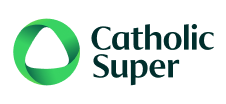Quick summary
Payday Super legislation has been formally passed and from 1 July 2026, employers must pay super contributions on the same day as salary/wage payments. Contributions must be received by the employee’s super fund within seven business days of their payday.
This change ensures super is paid promptly with each pay cycle, rather than quarterly. The Payday Super initiative is designed to build trust and transparency, making it easier for employees to track their super and helping grow their retirement savings through more frequent contributions and compounding interest.
We’re here to help you navigate the change confidently by supporting you with training, payroll guidance, and transition support.



